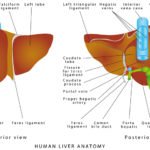A recent study by the Environmental Working Group (EWG) found that pet dogs and cats have an extensive mix of toxins circulating in their systems. According to an article in the New York Times, the researchers tested the blood and urine of 20 dogs and 37 cats at a Virginia clinic and discovered high levels of mercury, as well as 48 industrial chemicals (out of 70 chemicals tested) used in manufacturing fabrics, furniture, plastics, food packaging, and electronic goods. These chemicals included a high percentage of known carcinogens, neurotoxins, and reproductive system disrupters. The toxins mirrored those found in human subjects, but many were at considerably higher levels. For instance, when compared with human subjects, the cats tested at 23 times the level of fire retardants (PBDEs), and more than five times the amounts of mercury, while the dogs showed more than double the level of perfluorochemicals, including toxic stain-retardants.
Given that the cancer rate in dogs far surpasses the rate for humans — dogs have 35 times more skin cancer, four times more breast tumors, eight times more bone cancer, and twice the incidence of leukemia — and given that 11 carcinogens were found in the dogs tested, one might suspect that there’s a link between the high levels of toxic chemicals and the elevated levels of disease. In fact, numerous studies have shown such a link. In the case of cats, the researchers point out the “growing use of PBDEs in consumer products over the past 30 years has paralleled the rising incidence of feline hyperthyroidism,” one of the leading causes of illness in older cats.
Why do dogs and cats accumulate so much more of the poisonous stuff than humans do? For one thing, everything beloved by pets goes into their mouths. Dogs chew on plastic toys, slippers, underwear, molding; cats lick the couch or lick their fur after sitting on furniture. And these things, benign though they seem, are loaded with toxins. Plastic toys have been treated with chemical softeners. Clothing and furniture may have a fire retardant or stain repellent coating. Accumulated toxins on these surfaces go right into the pets’ systems, posing risk of cancer, reproductive problems, and birth defects.
But the “uncivilized” oral behavior of dogs and cats doesn’t account for all of the toxic build-up in their systems. Their flea collars spew chemicals. Canned pet food may have toxic packaging; that same pet food is relatively unregulated and may contain toxic additives; and fish products used in pet food contains mercury and PBDEs. Pet beds may be treated with stain repellents. The floor, where pets spend most of their time, may be coated with pesticide residue tracked in from outside. The bottom line is that our pets literally lie in a toxic soup.
If you love your pets — and there are seventy percent more pets in America than children, signaling a lot of interspecies love — certainly these findings should concern you. But you might also wonder, what do these findings mean for humans?
Make no mistake, we are equally exposed — and only slightly less toxic than our pets. In fact, according to the report issued by the EWG, “Our pets well may be serving as sentinels for our own health, as they breathe in, ingest or absorb the same chemicals that are in our environments. Exposures that pose risks for pets pose risks for human health as well. A new system of public health protections that required companies to prove chemicals are safe before they are sold would help protect all of us, including the pets we love.”
Yet another reason to detox regularly, eat organically — and refrain from chewing on the couch, no matter how frustrating life may be at the moment. As for your pets, you might want to consider cooking for them rather than serving packaged pet foods and consulting a holistic vet for additional guidance.
:hc












Dear Jon Barron,
Your comments are right on. There are still so many problems with pet foods and we are still loosing too many of them years before their time. You are right and we need to take care of us people and our beloved pets in the best way we can. Natural, organic, holistic pet food or homemade pet food recipe books so you can cook for them. I do both. You have a wonderful informative blog.
Linda
http://www.EverythingNaturalPetFood.com
I was so thankful that I had been making organic wholistic health food for my dogs when all that pet food poisioning happened. I also scrub my floors with peroxide instead of chemicals and would suggest one of those new steamer scrubbers as well to anyone who wants their pets walking on way less toxic floors and removing shoes and leaving them at the door. It’s somewhat inconvenient, but far safer for our pets. In making your own pet foods I use the following in proportions of about 1/3 ground organic turkey, beef or chicken, 1/3 ground vegetables and apple, and 1/3 precooked brown rice or non-polished barley – make sure there is a sufficient amount of fiber – sweet potatos, ground organic fresh apple, ground flax seeds, and also omega 3 fatty acids (organic flax seed oil or organic olive oil), barley greens powder, assortment of ground broccoli, ground fresh green beans, ground carrots, mashed butternut squash, a little honey, a tablespoon of apple cider vinegar, ground organic chicken necks (for calcium), and cook the meat and vegetables to kill all the bacteria, etc. I usually make up 2 -3 weeks worth at a time and freeze in individual little zip-lock packages that I thaw out each day.Be sure there is no ground turkey skin (causes pancreatitis in dogs). A friend of mine worked for a vet and they always had a bunch of dogs in after Thanksgiving and Christmas with pancreatitis from all the turkey skin they had been lovingly fed by their caretakers who didn’t have a clue what it did to them. Making your own food is a bit time consuming and not inexpensive, but I find it is less expensive overall in the savings of vet expenses and pet longevity.
Once again another valued addition to the toxic library knowledge. Thank you Jon.
Adding my 2 cents:
I treat my 6 cats as natural as possible.
For fleas I use collodial silver, a few drops in their watercups.
During the year I refrain from using tick/flea sprays or drops, instead I take a wad of cotton and drain it with collodial silver, I then rub/massage it in their fur, also treat their ears with it. It works wonders.
For detoxing:
I add a pinch of bentonite clay to their water, they love it.
Catfood homemade, I sprinkle or mix korean algae or spirulina on/in their food. Their furs are shiny and my cats behave like cats.
The one thing I’ve learned in all this: the bigger the unconditional thinking the cheaper life gets, especiallyin the long run.
Keep up the valued work and thanks to all others adding so much value from their own experiences.
Ellyssa
I have a 10 yr old brendel
I have a 10 yr old brendel boxer who goes by the name ROCKY
he has on one of his lungs a growth on the lower portion. they are having a problem trying to diagnosis the problem the vet
wants to operate on him,and get a biopsy of the lung. If it is
malignant with chemo treatments wil probably give a life expectancy of about 2-3 monthes.i am trying to find out what kind of diet that i can put him on with cancer retardent vegetables . thank you very much joseph